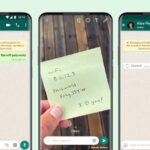Photos are visual diaries of our lives, capturing moments we cherish. When upgrading to a new Android phone, transferring these precious memories seamlessly is crucial. Losing photos during a phone switch is a common fear, but thankfully, moving your photo library from one Android device to another is easier than you might think.
Our expert team at dfphoto.net has rigorously tested and compiled this comprehensive guide detailing six effective methods to transfer your photos. Whether you prioritize speed, convenience, or offline access, we’ve got you covered.
Choosing the Right Photo Transfer Method: Key Considerations
Before diving into the methods, let’s consider what factors might influence your choice:
- Storage Preferences: Do you prefer keeping your photos directly on your Android devices, leveraging cloud storage, or maintaining a local backup on your computer? Each option has storage space implications and potential subscription costs for cloud services.
- Compatibility: Certain transfer methods might have device or Android version limitations. Ensure your chosen method is compatible with both your old and new phones.
- Transfer Scope: Are you only transferring photos, or do you need to move other data like videos, music, or documents simultaneously? Some methods are photo-specific, while others offer broader data transfer capabilities.
Let’s explore six distinct methods for transferring your photos:
Method 1: Transfer Photos via PC – Secure and Local Control
Managing your photo library on a computer offers a large screen experience and complete control over your files, independent of cloud services. This method uses your PC as an intermediary, providing a secure and local transfer option.
Droid Transfer and its companion Android app, Transfer Companion, provide a robust solution for this. Droid Transfer allows you to access and copy various Android content types, including photos, music, messages, and contacts, to your PC.
Here’s how to transfer your photos using Droid Transfer:
- Connect Your Old Android: Install and launch Droid Transfer on your PC and Transfer Companion on your old Android phone. Connect your phone to your PC via Wi-Fi or USB cable following the on-screen instructions provided by Droid Transfer.
- Access Photos: In Droid Transfer on your PC, navigate to the “Photos” section.
- Select and Save Photos: Choose the photos you wish to transfer. Click “Save to PC” and select a destination folder on your computer to save your photos.
- Connect Your New Android: Once the transfer from your old phone is complete, disconnect it and connect your new Android phone to your PC using Droid Transfer.
- Add Photos to New Device: In Droid Transfer, in the “Photos” section for your new device, click “Add Photos to Device“.
- Choose Photos to Transfer: Select the folder on your PC where you saved your photos from the old Android. Choose the specific photos or the entire folder to transfer to your new Android.
Droid Transfer also offers a convenient “Export New Photos” feature for regular photo backups to your PC. This ensures your photo library is safely backed up and provides an extra layer of security.
You can try Droid Transfer for free to transfer up to 100 photos. For unlimited transfers and full feature access, a license purchase is available.
Advantages:
- Local Storage: Photos are stored locally on your Android devices and your PC, providing secure and offline access.
- Comprehensive Android Management: Droid Transfer offers a wide range of Android management features beyond photo transfer, including backup, editing, and syncing for various data types.
- Versatile Connection: Supports both Wi-Fi and USB cable connections.
- Cost-Effective: Offers excellent value with a one-time license purchase for full functionality.
- Broad Compatibility: Works with Windows 10 and higher PCs and Android devices running Android 5 or later.
Disadvantages:
- Indirect Transfer: Requires an intermediary PC for the transfer process.
Method 2: Bluetooth Transfer – Wireless but Slower
Bluetooth, a long-standing wireless technology, remains a viable option for transferring files between devices, including photos between Android phones.
Before starting, ensure Bluetooth is enabled on both devices and they are paired with each other.
Here’s how to transfer photos using Bluetooth:
- Enable Bluetooth and Pair Devices: On both Android phones, go to Settings > Bluetooth and toggle Bluetooth ON. On one device, initiate pairing by tapping “Pair new device” or similar option. Select the other Android device from the list to pair them.
- Select Photos to Share: Open your photo gallery app on the Android phone containing the photos. Select the photos you want to transfer. For multiple selections, long-press on a photo and then tap on other photos.
- Share via Bluetooth: Tap the Share icon (often three connected dots or a similar symbol), choose Bluetooth, and select the paired destination Android device.
- Accept Transfer on Receiving Device: On the receiving Android phone, you will receive a notification to accept the incoming Bluetooth file transfer. Accept the transfer to begin receiving the photos.
While convenient for small transfers, be mindful of Bluetooth’s slower transfer speeds, especially for large photo libraries. Also, be aware of Bluetooth security best practices.
Advantages:
- Wireless and Direct: Offers a cable-free, direct phone-to-phone transfer.
- Widely Available: Bluetooth is a standard feature on virtually all modern smartphones.
- Versatile File Transfer: Supports transfer of various file types, including photos, videos, and audio.
Disadvantages:
- Slow Transfer Speed: Significantly slower compared to Wi-Fi or USB, making it impractical for large photo collections.
- Limited Bandwidth: Not suitable for transferring large files or albums due to bandwidth constraints.
- Potential Connection Issues: Bluetooth transfers can be prone to interference and pairing problems, leading to dropped connections.
- Security Concerns: Historically, Bluetooth has had security vulnerabilities. Adhere to safe Bluetooth usage practices.
Method 3: Google Photos – Cloud-Based Synchronization and Access
Google Photos offers a seamless cloud-based solution for managing and transferring photos. By backing up your photos to Google Photos, you can access them on any device logged into your Google account, including your new Android phone.
Google Photos provides 15GB of free storage shared across your Google account (including Gmail and Google Drive). For larger photo libraries, a Google One subscription is required for additional storage.
Here’s how to use Google Photos for photo transfer:
-
Backup Photos on Old Android: On your old Android phone, open the Google Photos app and ensure you are logged in with your Google account.
-
Enable Backup & Sync: Tap your profile picture in the top-right corner. If “Backup is off,” tap “Turn on backup“.
-
Choose Google Account: Select the Google account you will use on your new Android phone.
-
Confirm Backup: Tap “Turn on backup“. Google Photos will begin backing up your photos and videos to the cloud. The backup time depends on your internet connection and the size of your photo library.
-
Access Photos on New Android: On your new Android phone, open the Google Photos app and log in with the same Google account used for backup.
-
View and Download (Optional): Your backed-up photos will be available in Google Photos on your new device. You can access them directly from the cloud or download specific photos to your device storage. To download, select a photo, tap More (three dots), and then Download.
Advantages:
- Fast and Wireless: Offers quick and wireless photo transfer and synchronization.
- Cloud Storage and Accessibility: Photos are stored in the cloud, freeing up device storage and making them accessible from any device with internet access.
- Wide Compatibility: Google Photos is available on virtually all Android devices.
Disadvantages:
- Storage Limitations: Free storage is limited to 15GB; larger libraries require a paid Google One subscription.
- Internet Dependency: Requires a stable internet connection for backup, access, and transfer.
- Limited Scope: Primarily designed for photos and videos. Google Drive or Google One are needed for other file types.
Method 4: Quick Share (Nearby Share) – Fast Wireless Transfers
Quick Share, formerly known as Nearby Share, is Google’s enhanced wireless sharing platform for Android, offering faster and more efficient file transfers than Bluetooth. It leverages a combination of Bluetooth and Wi-Fi for optimal speed and reliability.
Similar to Bluetooth, remember to maintain good security practices while using wireless sharing features.
Quick Share is pre-installed on most Android devices running Android 6 and higher.
Here’s how to transfer photos using Quick Share:
-
Enable Quick Share, Bluetooth, and Wi-Fi: Ensure Quick Share is enabled on both Android devices (usually found in Settings > Google > Device Connections > Quick Share or similar). Also, ensure Bluetooth and Wi-Fi are turned on for both devices.
-
Select Photos to Share: Open the Photos app on your old Android phone and select the photos you want to transfer.
-
Initiate Quick Share: Tap the Share icon, and then select “Quick Share“.
-
Device Discovery: Your phone will scan for nearby devices with Quick Share enabled.
-
Select Receiving Device: Choose your new Android phone from the list of available devices.
-
Accept Transfer on New Phone: On your new Android phone, accept the incoming Quick Share transfer request. The photo transfer will begin.
Advantages:
- Fast Wireless Transfer: Offers significantly faster transfer speeds than Bluetooth, especially when Wi-Fi is available.
- Direct Device-to-Device: Enables direct wireless transfer between Android phones.
- Broad Compatibility: Supported on most Android devices running Android 6 and later.
- Versatile File Transfer: Supports various file types, including photos, videos, and documents.
Disadvantages:
- Bluetooth Security Considerations: Relies on Bluetooth for device discovery, inheriting potential Bluetooth security concerns.
Method 5: Android Beam (NFC) – Tap-to-Transfer (Legacy)
Android Beam, a predecessor to Quick Share, used NFC (Near Field Communication) for initiating file transfers by physically touching devices together. While deprecated in Android 10 and later, it might still be functional on older devices.
NFC is the same technology used for contactless payments. Android Beam requires devices to be in very close proximity for data transfer.
Before proceeding, check if both Android devices have NFC and Android Beam features and ensure they are enabled in settings (often under “Connected Devices” or “Wireless & Networks > More”).
Here’s how to transfer photos using Android Beam:
-
Enable NFC and Android Beam: On both Android phones, enable NFC and Android Beam in settings.
-
Select Photos to Share: Open the Photos app on your old Android and select the photos you want to transfer.
-
Bring Devices Together: Ensure both Android phones are unlocked and bring their backsides together, aligning the NFC antennas (location varies by device, consult your phone’s manual if needed).
-
Tap to Beam: On the sending device, once the NFC connection is established, you will see a “Tap to Beam” prompt on the screen.
-
Initiate Transfer: Tap the screen to initiate the photo transfer via Android Beam.
Advantages:
- Direct Wireless Transfer: Offers direct phone-to-phone wireless transfer.
- Local Storage: Photos are stored locally on Android devices.
- Versatile File Transfer: Supports photos, videos, and other file types.
Disadvantages:
- Limited Compatibility: Supported only on some Android devices running Android 4 to Android 9 (deprecated in Android 10+).
- Deprecated Technology: Android Beam is no longer actively developed and is becoming less relevant.
- Proximity Requirement: Requires devices to be physically very close or touching for transfer.
Method 6: Smart Switch – Samsung-Specific Migration Tool
Samsung Smart Switch is a dedicated app designed for users migrating to a new Samsung Galaxy device from an older Android phone (or other platforms). It streamlines the process of transferring various data types, including photos, to a new Samsung phone.
Smart Switch may be pre-installed on new Samsung Galaxy phones. If not, download it from the Google Play Store.
Here’s how to transfer photos using Smart Switch:
- Install Smart Switch: Install the Smart Switch app on both your old Android phone and your new Samsung Galaxy phone (if not pre-installed).
- Launch Smart Switch and Initiate Receive: Launch Smart Switch on your new Samsung Galaxy phone. Tap “Receive data” and then select “Galaxy/Android” as the source device type.
- Choose Connection Method: Select your preferred connection method: “USB cable” or “Wi-Fi“. Follow the on-screen instructions to establish a connection between the two devices.
- Select Data to Transfer: Choose the types of data you want to transfer, ensuring “Photos” is selected. You can also select other data like videos, music, messages, and more.
- Transfer Data: Tap “Transfer” to begin the data migration process. Once complete, tap “Done“.
Advantages:
- Direct and Comprehensive Transfer: Offers direct phone-to-phone transfer with a wide range of data types supported.
- Flexible Connection: Supports Wi-Fi, USB cable, and even SD card transfers.
- Samsung Ecosystem Integration: Optimized for transferring data to Samsung Galaxy devices.
Disadvantages:
- Samsung-Specific: Primarily designed for transferring data to Samsung Galaxy devices. While it can receive data from other Android devices, its primary function is within the Samsung ecosystem.
- Compatibility Limitations: While compatible with Android 4.3 and later source devices, the destination device is intended to be a Samsung Galaxy phone.
Conclusion: Choosing the Best Method for You
You now have a comprehensive understanding of six effective methods to transfer photos from one Android phone to another. The “best” method depends on your individual needs and priorities.
- For local control and comprehensive backups, Droid Transfer offers a robust PC-based solution.
- Bluetooth is suitable for small, occasional transfers, but can be slow.
- Google Photos provides seamless cloud synchronization and accessibility, ideal for users invested in the Google ecosystem.
- Quick Share is a fast and convenient wireless option for direct phone-to-phone transfers.
- Android Beam is a legacy option for older devices but is becoming increasingly obsolete.
- Smart Switch is an excellent choice for users migrating to a new Samsung Galaxy phone.
Consider the pros and cons of each method to choose the one that best suits your photo transfer needs and ensures your precious memories are safely moved to your new Android device.
Publisher: dfphoto.net Experts
[
Droid Transfer](/droidtransfer/transfer-photos-from-android-to-pc.php)Transfer photos from Android to Android and easily back up your media to PC.
Related Articles
▷Free Download
Droid Transfer X
Easily transfer photos from Android to Android and regularly back up your media using your PC.
Find out more >Try Droid Transfer free, today!
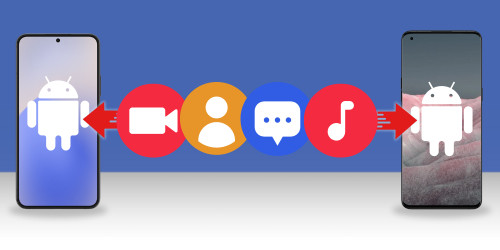
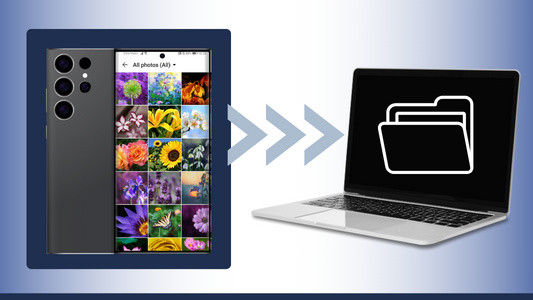 Transfer Photos from Android to PC – Related Article 4 Easy Ways to Transfer Photos from Android to PC
Transfer Photos from Android to PC – Related Article 4 Easy Ways to Transfer Photos from Android to PC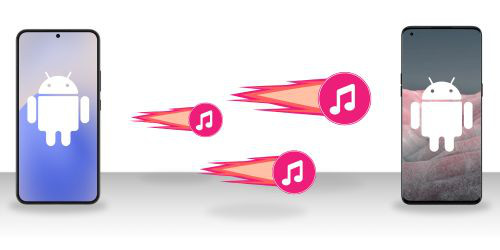 Transfer Music from Android to Android – Related Article 6 Quick and Easy ways to transfer music from one Android to another
Transfer Music from Android to Android – Related Article 6 Quick and Easy ways to transfer music from one Android to another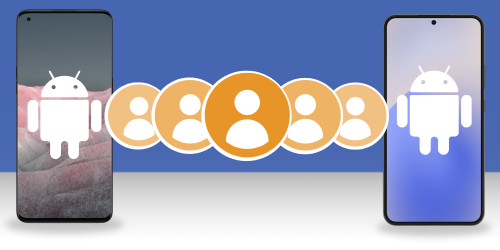 Transfer Contacts from Android to Android – Related Article The Top 6 Methods to Transfer your Android Contacts to a New Phone
Transfer Contacts from Android to Android – Related Article The Top 6 Methods to Transfer your Android Contacts to a New Phone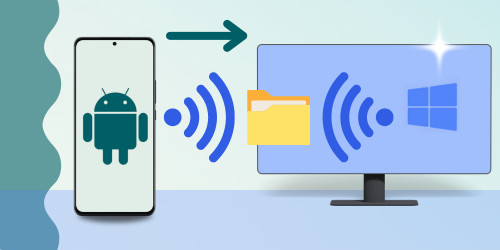 Transfer Files from Android to PC via WiFi – Related Article 3 ways to transfer files from Android to PC using Wi-Fi
Transfer Files from Android to PC via WiFi – Related Article 3 ways to transfer files from Android to PC using Wi-Fi